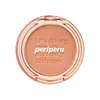What's inside
What's inside
 Key Ingredients
Key Ingredients

 Benefits
Benefits

 Concerns
Concerns

 Ingredients Side-by-side
Ingredients Side-by-side

Polymethylsilsesquioxane
Mica
Cosmetic ColorantMacadamia Seed Oil Polyglyceryl-6 Esters Behenate
EmollientPolyglyceryl-2 Triisostearate
EmulsifyingOctyldodecanol
EmollientDipentaerythrityl Hexahydroxystearate/Hexastearate/Hexarosinate
Skin ConditioningBis-Diglyceryl Polyacyladipate-2
EmollientCI 77891
Cosmetic ColorantSynthetic Wax
AbrasiveTriethylhexanoin
MaskingHydrogenated Poly(C6-14 Olefin)
EmollientTribehenin
EmollientIsononyl Isononanoate
EmollientSynthetic Beeswax
Emulsion StabilisingSorbitan Isostearate
EmulsifyingC13-15 Alkane
SolventCI 77492
Cosmetic Colorant1,2-Hexanediol
Skin ConditioningCetyl PEG/PPG-10/1 Dimethicone
EmulsifyingPolyglyceryl-3 Polyricinoleate
EmulsifyingStearic Acid
CleansingOctocrylene
UV AbsorberPhenoxyethanol
PreservativeTocopheryl Acetate
AntioxidantCI 15850
Cosmetic ColorantDisteardimonium Hectorite
StabilisingTriethoxycaprylylsilane
CI 77499
Cosmetic ColorantAluminum Hydroxide
EmollientTocopherol
AntioxidantPentaerythrityl Tetra-Di-T-Butyl Hydroxyhydrocinnamate
AntioxidantPolymethylsilsesquioxane, Mica, Macadamia Seed Oil Polyglyceryl-6 Esters Behenate, Polyglyceryl-2 Triisostearate, Octyldodecanol, Dipentaerythrityl Hexahydroxystearate/Hexastearate/Hexarosinate, Bis-Diglyceryl Polyacyladipate-2, CI 77891, Synthetic Wax, Triethylhexanoin, Hydrogenated Poly(C6-14 Olefin), Tribehenin, Isononyl Isononanoate, Synthetic Beeswax, Sorbitan Isostearate, C13-15 Alkane, CI 77492, 1,2-Hexanediol, Cetyl PEG/PPG-10/1 Dimethicone, Polyglyceryl-3 Polyricinoleate, Stearic Acid, Octocrylene, Phenoxyethanol, Tocopheryl Acetate, CI 15850, Disteardimonium Hectorite, Triethoxycaprylylsilane, CI 77499, Aluminum Hydroxide, Tocopherol, Pentaerythrityl Tetra-Di-T-Butyl Hydroxyhydrocinnamate
Talc
AbrasiveMica
Cosmetic ColorantMethyl Methacrylate Crosspolymer
Diisostearyl Malate
EmollientOctyldodecyl Stearoyl Stearate
EmollientVegetable Oil
Skin ConditioningDimethicone
EmollientMagnesium Myristate
Isocetyl Myristate
EmollientHydrogenated Lecithin
EmulsifyingAluminum Hydroxide
EmollientTitanium Dioxide
Cosmetic Colorant1,2-Hexanediol
Skin ConditioningGlyceryl Caprylate
EmollientMethicone
EmollientHelichrysum Italicum Flower Water
Skin ConditioningCI 19140
Cosmetic ColorantCI 77742
Cosmetic ColorantCI 73360
Cosmetic ColorantCI 77499
Cosmetic ColorantCI 77007
Cosmetic ColorantTalc, Mica, Methyl Methacrylate Crosspolymer, Diisostearyl Malate, Octyldodecyl Stearoyl Stearate, Vegetable Oil, Dimethicone, Magnesium Myristate, Isocetyl Myristate, Hydrogenated Lecithin, Aluminum Hydroxide, Titanium Dioxide, 1,2-Hexanediol, Glyceryl Caprylate, Methicone, Helichrysum Italicum Flower Water, CI 19140, CI 77742, CI 73360, CI 77499, CI 77007
 Reviews
Reviews

Ingredients Explained
These ingredients are found in both products.
Ingredients higher up in an ingredient list are typically present in a larger amount.
1,2-Hexanediol is a synthetic liquid and another multi-functional powerhouse.
It is a:
- Humectant, drawing moisture into the skin
- Emollient, helping to soften skin
- Solvent, dispersing and stabilizing formulas
- Preservative booster, enhancing the antimicrobial activity of other preservatives
Aluminum Hydroxide is a form of aluminum. It can be naturally found in nature as the mineral gibbsite. In cosmetics, Aluminum Hydroxide is used as a colorant, pH adjuster, and absorbent.
As a colorant, Aluminum Hydroxide may add opacity, or reduce the transparency. Aluminum hydroxide is contains both basic and acidic properties.
According to manufacturers, this ingredient is an emollient and humectant. This means it helps hydrate the skin.
In medicine, this ingredient is used to help relieve heartburn and help heal ulcers.
There is currently no credible scientific evidence linking aluminum hydroxide in cosmetics to increased cancer risk.
Major health organizations allow the use of aluminum hydroxide in personal care products and have not flagged it as a carcinogenic risk at typical usage levels.
Learn more about Aluminum HydroxideCi 77499 is also hydrated iron III oxide. It is created from mixing red and black iron oxides. This helps give shades of darkness to a product.
Iron III oxides are classified as inorganic chemicals for coloring.
Mica is a naturally occurring mineral used to add shimmer and color in cosmetics. It can also help improve the texture of a product or give it an opaque, white/silver color.
Serecite is the name for very fine but ragged grains of mica.
This ingredient is often coated with metal oxides like titanium dioxide. Trace amounts of heavy metals may be found in mica, but these metals are not harmful in our personal products.
Mica has been used since prehistoric times throughout the world. Ancient Egyptian, Indian, Greek, Roman, Aztec, and Chinese civilizations have used mica.
Learn more about Mica